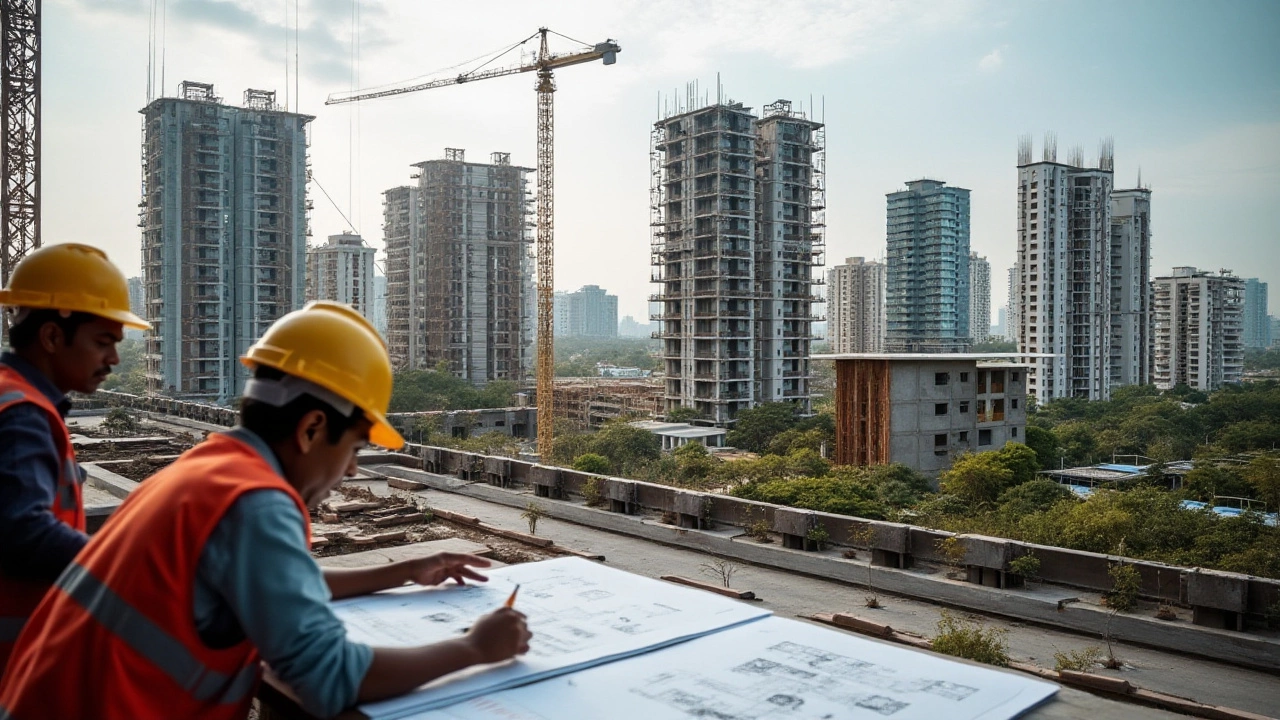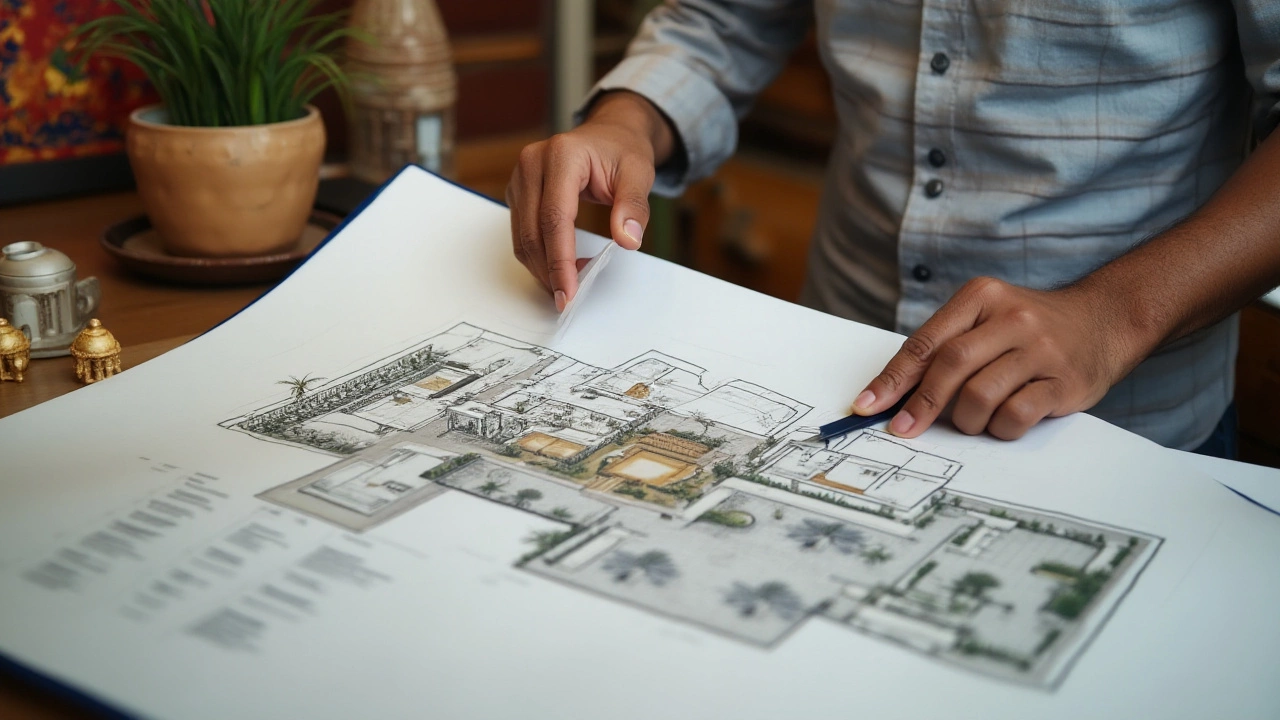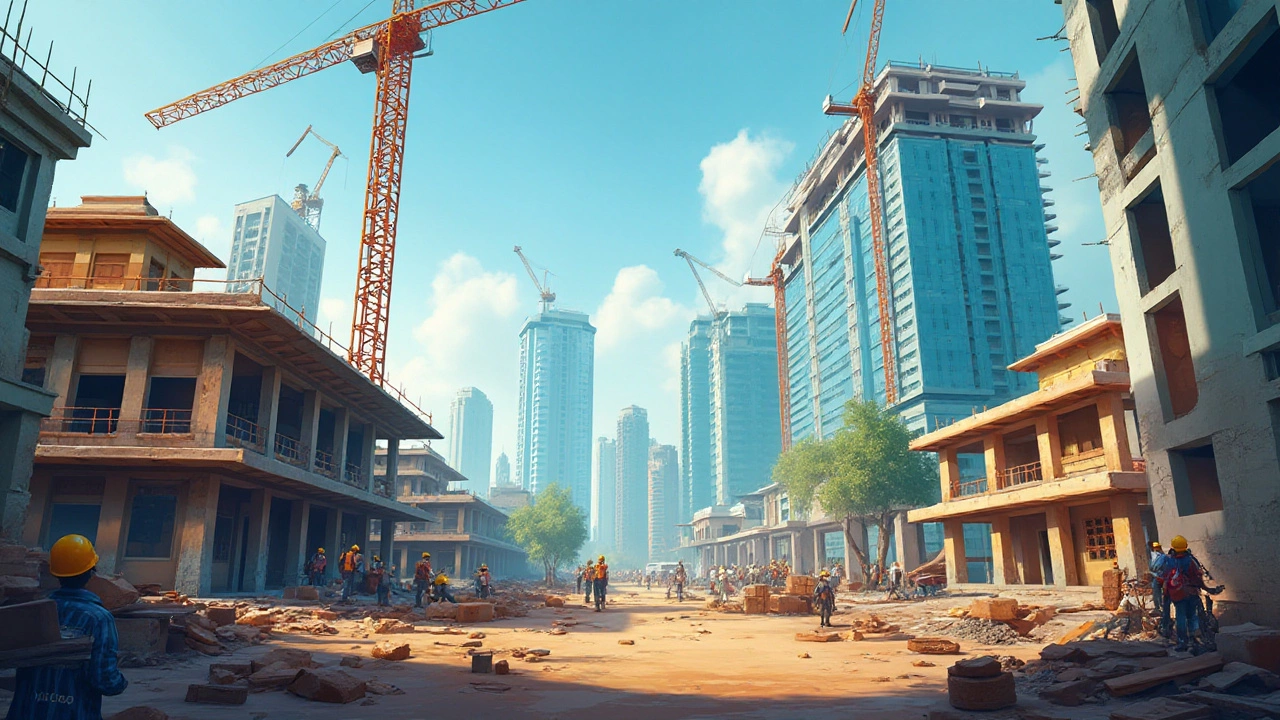The Heart of Craftsmanship: Residential Construction vs. Commercial Building

When we think of construction, our minds often drift to towering skyscrapers or bustling shopping centers. Yet, there is a quieter, more intimate side of building that focuses on creating spaces for living – residential construction. This realm of construction embraces the art of craftsmanship, offering individuals places they can truly call home.
Residential construction, unlike its commercial counterpart, is about personal spaces tailored to accommodate individual lifestyles and personal tastes. It's the opposite of commercial construction in its goals, scale, and often, the materials used. Understanding what it takes to build homes versus offices involves unpacking the essence of what makes a dwelling comfortable and functional.
In the world of home building, each project is a canvas, allowing builders to express creativity and sensitivity to the occupants' needs. This distinction not only highlights the contrasting priorities between commercial and residential construction but also emphasizes the skills and insight required to thrive in residential projects.
- Defining Residential Construction
- Key Differences from Commercial Construction
- The Personal Touch in Home Building
- Navigating Challenges in Residential Projects
Defining Residential Construction
Residential construction stands apart as a unique field where every brick laid and window installed plays a crucial role in crafting personalized living spaces. Unlike commercial ventures primarily aimed at functionality and accessibility to large crowds, residential construction focuses intimately on the needs and desires of individual homeowners. This involves more than just erecting a structure; it’s about creating a sanctuary, a place of comfort and safety that fulfills one's aesthetic and practical needs. Whether it’s a suburban single-family home or a cozy city apartment, the emphasis remains consistently on making a structure that feels uniquely tailored to its inhabitants.
In this domain, considerations transcend mere functionality. The choice of materials, architectural style, and layout contribute significantly to the character and efficiency of a residential project. Each decision made during the design and construction phases reflects a commitment to durability, environmental responsibility, and the personal tastes of future occupants. Residential construction is not just about meeting basic shelter needs but about blending practicality with lifestyle aspirations. Home building projects are less about standardization and more about customization, offering opportunities for creativity both in design and execution.
One notable aspect of this field is the evolving building technologies and materials designed to enhance the quality of life for residents. Smart home technology, sustainable building practices, and innovative design approaches are now a staple in modern residential construction. These elements ensure homes are more energy-efficient and environmentally friendly, aligning with the growing demand for greener living solutions. This transition towards sustainability is not merely a trend but a significant shift in how we consider the environmental impact of residential projects. According to the U.S. Green Building Council, homes that meet certain green standards can reduce energy use by up to 30%.
The enduring appeal of residential construction lies in its ability to adapt and innovate while keeping human needs at its core. As families evolve, so do their homes, requiring structures that can accommodate growing needs or changing lifestyles. This adaptability is a hallmark of residential construction, showcasing its dynamic nature compared to the more static requirements of commercial spaces. It’s about continuously improving comfort, safety, and functionality, offering the homeowner an ever-present sense of belonging and identity.

Key Differences from Commercial Construction
Residential construction and commercial building may share a foundation in building science, but their end goals diverge significantly, leading to unique challenges and timelines. Where commercial construction projects prioritize efficiency and maximization of space because they serve a large number of users or customers, residential construction places a heavy emphasis on personal aesthetics, comfort, and the functional needs of a single family or individual. This divergence starts at the very beginning of the design process and continues through to the last details of construction.
A significant difference lies in regulatory requirements. Commercial buildings often have to comply with more stringent building codes due to the high capacity of occupants and diverse usage, requiring specific allowances for safety, accessibility, and fire regulations. In contrast, homes are typically subject to less complex codes but may be intricately customized to the homeowner's preferences, blending function with personal style. This personalization contrasts sharply with the uniformity commonly seen in commercial spaces, which are designed to accommodate multiple uses and don't often tailor to individual taste.
Another distinctive aspect is financial backing. Commercial construction projects usually involve substantial financial investment from corporations, and their budgets can be robust, leading to a push for quick completion to start generating revenue. Residential construction, on the other hand, often involves smaller-scale financing, either from individuals or developers aiming to sell homes. This can lead to differences in the pacing of the projects; while commercial projects are fast-tracked to capitalize on their economic potential, residential projects may be paced out to meet budget constraints and detailed personalized specifications.
"The nuances of residential construction provide an intimate connection between the builder and homeowner, allowing an architectural dialogue not present in commercial building," notes architectural expert Jane Lyons.
In terms of resource management, home building generally allows for a closer working relationship between the client and the builder, with adjustments and negotiations happening directly. Commercial projects, however, might involve vast teams, often requiring formal project management structures due to the complexity and scale involved. This difference in management approaches can impact how decisions are made and affect timelines significantly.
Moreover, sustainability trends manifest differently in these sectors. Residential builders often incorporate eco-friendly features like solar panels, sustainable materials, and localized environmental considerations from the outset to meet the growing demand for green homes. On the flip side, commercial spaces reflect these trends through energy-efficient designs and systems that address broader environmental impacts, often spurred by regulations and corporate social responsibility policies.
In examining these contrasts, the underlying theme in residential construction remains the level of customization and human touch involved, a far cry from the impersonal speed-driven processes that characterize typical commercial builds. Each type of construction offers unique insights and requires its own set of skills, priorities, and considerations, making them both essential but distinctly different aspects of the building industry.

The Personal Touch in Home Building
The quaint charm of residential construction lies in its intrinsic ability to reflect the personal dreams and aspirations of its inhabitants. Unlike commercial construction, which often adheres to functionality for the masses, home building delves into the intimate details of a family's life, tailoring architecture to suit unique lifestyles. This process usually begins with understanding the homeowners’ needs deeply — not just how many bedrooms or which side the sun sets on, but about the heartbeats that will make a house a home. Such personalization proves the dedication to crafting spaces that aren't just structurally sound but emotionally fulfilling.
There exists an unspoken harmony when curating living spaces, incorporating elements that echo the ever-evolving dynamics of family life. Imagine walking through a beautifully crafted open-plan kitchen; it’s not merely about the expanse of counters or the latest appliances. It's about envisioning every family gathering, each birthday cake baked, every morning coffee brewed with love. This is the transformative power of a well-designed home, capturing the continuous tapestry of life. Quite fittingly, as the famous architect Frank Lloyd Wright once encapsulated,
"The goal is not to be a contemporary designer but to stay in tune with the aspirations of those who wish to use and love the home."
Craftsmanship in residential construction also emphasizes material choice, adding not only aesthetic value but functionality. Builders take meticulous care in sourcing materials that resonate with the owner’s vision — be it rustic wooden beams that evoke the charm of the countryside or sleek modern finishes that speak volumes of metropolitan elegance. The choice of materials extends beyond mere aesthetics and touches on the promise of durability and sustainability. Take for instance eco-conscious building practices that include solar panels and rainwater harvesting systems; these features not only reduce carbon footprints but also nod to the growing importance of sustainable living.
The beauty of home building lies in its challenges too. Unlike commercial building, where regulations often streamline a uniform template, residential construction often ventures into the experimental. Each project can surprise with new learning curves such as navigating zoning laws unique to certain neighborhoods or incorporating innovative technology within traditional frameworks. Yet, it is in overcoming these challenges that the personal touch shines through, as homeowners and builders collaborate to transform blueprints into cherished memories.
Ultimately, at the heart of constructing homes is the seamless blend of artistry and functionality, creating spaces that resonate with warmth and individuality. The very fact that residential construction thrives on its capacity to transform dreams into tangible dwellings marks its significance. From envisioning cozy reading nooks nestled by the window to expansive gardens that come alive with laughter and play, the personal touch in home building is all about nurturing environments that foster not just inhabitants but cherished memories. This nuanced approach makes all the difference, turning simple structures into homes imbued with history, hope, and heart.

Navigating Challenges in Residential Projects
Embarking on a residential construction project can feel like navigating a maze with its twists and turns. Each home is unique, with its own set of needs and obstacles to overcome. One of the primary challenges is meeting the specific desires of homeowners, who often have unique visions for their personal spaces. This means that contractors must be adept at understanding and translating these desires into reality. To accomplish this, communication is key—listening to the homeowner's ideas and concerns can prevent misunderstandings and ensure that the project stays on course.
The intricacies of home building go beyond mere aesthetics. Structural integrity, safety requirements, and energy efficiency must all work in harmony to create a lasting and sustainable structure. For example, many modern homes incorporate green technologies such as solar panels or geothermal heating, which require specialized knowledge and careful planning. Builders must stay current with the latest trends and technologies to meet these demands. A great deal of attention to detail is required, as even minor oversights can lead to costly problems down the line.
Regulatory compliance is another crucial component of residential projects. Zoning laws and building codes vary widely from place to place, often dictating what can and cannot be done on a particular piece of property. This translates to a need for patience and meticulousness, as sometimes getting all the right permits can take months and involve complex negotiations with local authorities. According to a recent industry study, delays in securing permits contribute to about 10% of the timeline extensions in residential projects.
"Good buildings come from good people, and all problems are solved by good design," noted architect Stephen Gardiner, underscoring the importance of smart planning in overcoming construction challenges.
Material sourcing and budget management often present a dual-edged challenge. Choosing the right materials can impact both the project's durability and its budget. While high-quality materials ensure longevity, they come with a heftier price tag, which can strain a budget if not managed carefully. This requires an intricate balancing act where builders must weigh the immediate costs against long-term benefits. Projects often have to adapt swiftly to changes in supply chain dynamics, such as fluctuating prices or availability of certain materials, which have recently been affected by global supply disruptions.
The timeline of a residential construction project is sometimes as unpredictable as the weather—quite literally. Construction activities are heavily influenced by weather conditions, which can halt or delay progress unexpectedly. It's not uncommon for builders to have flexible schedules, adjusting plans to accommodate weather changes, especially in regions with volatile climates. Having a clear, adaptable project plan can help mitigate these risks, ensuring that unexpected circumstances cause minimal disruption to the workflow.
Finally, managing the expectations of all parties involved—from architects and contractors to the homeowners—is a high-wire act that demands excellence in collaboration. Each stakeholder has a vision and, potentially, competing priorities. Harnessing a culture of teamwork and fostering open communication channels can be invaluable in aligning these varied objectives to achieve the common goal of building a beautiful, functional home. In this pursuit, adaptability, creativity, and perseverance become the cornerstones of successfully navigating the myriad challenges in residential construction.

